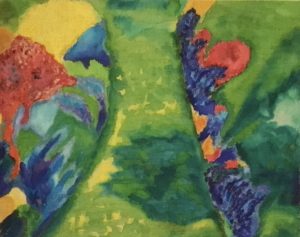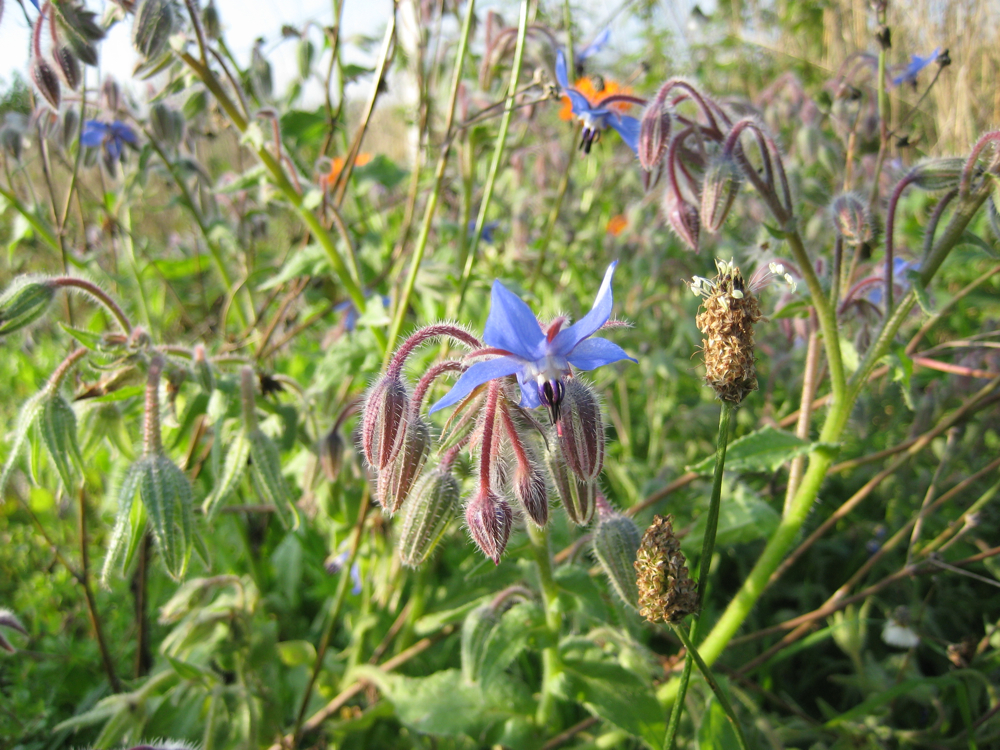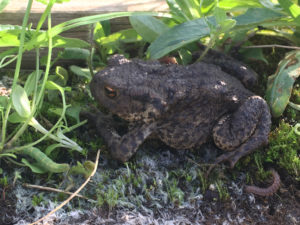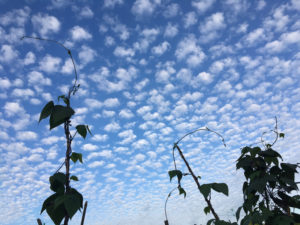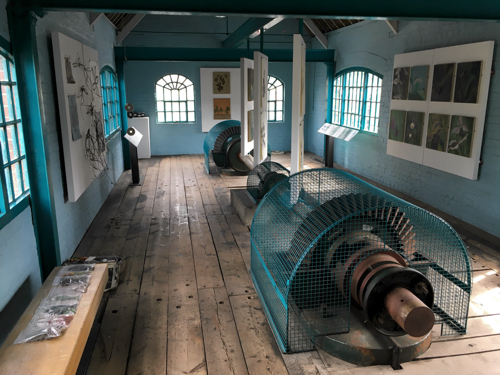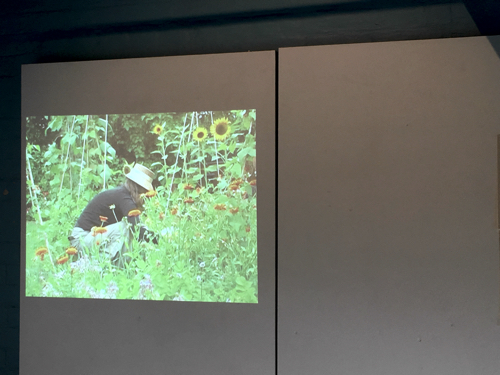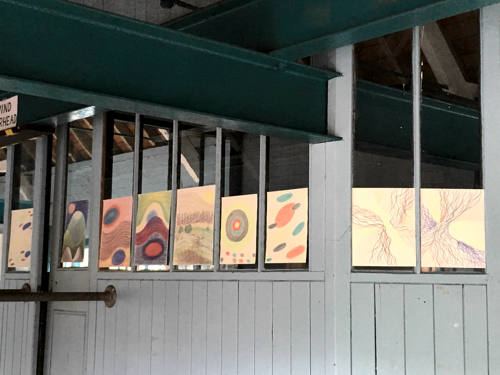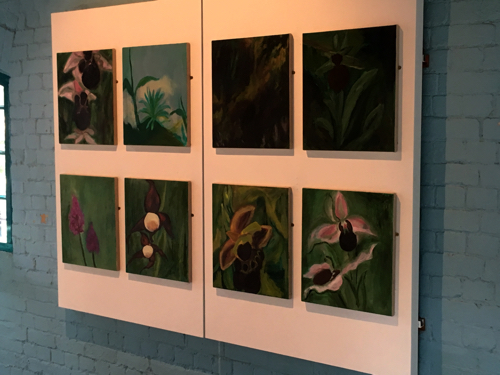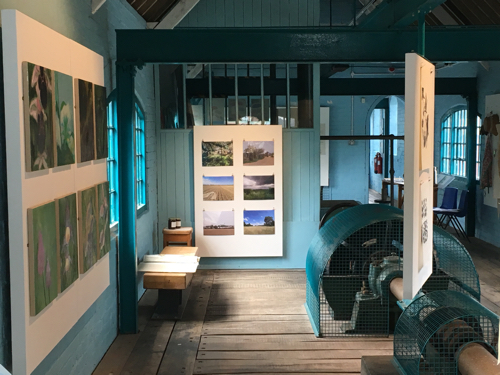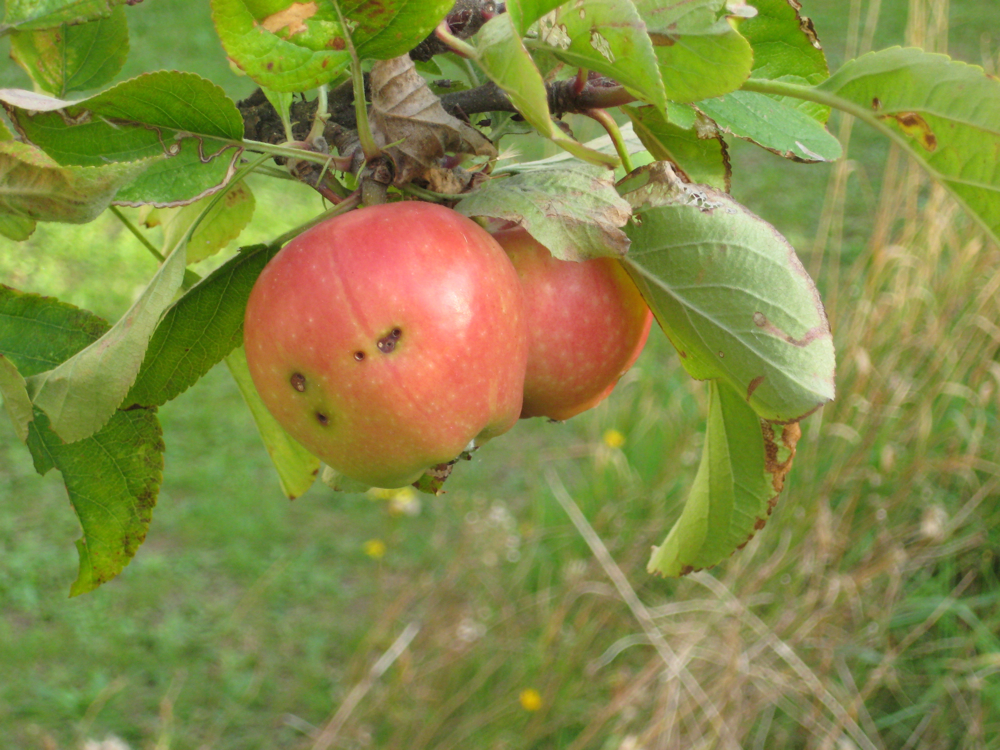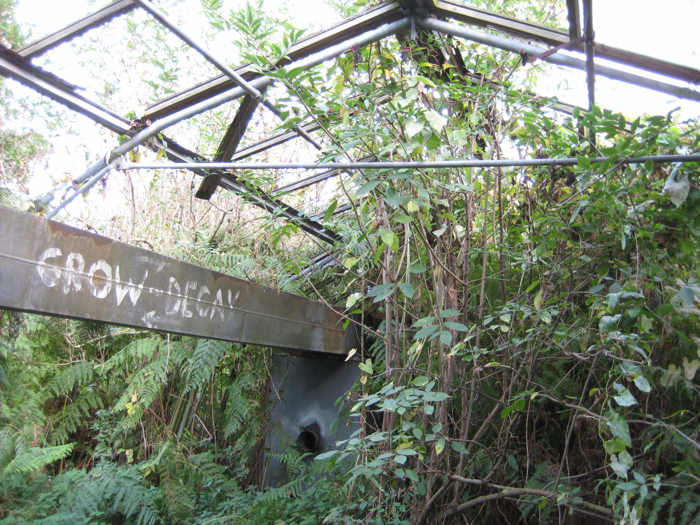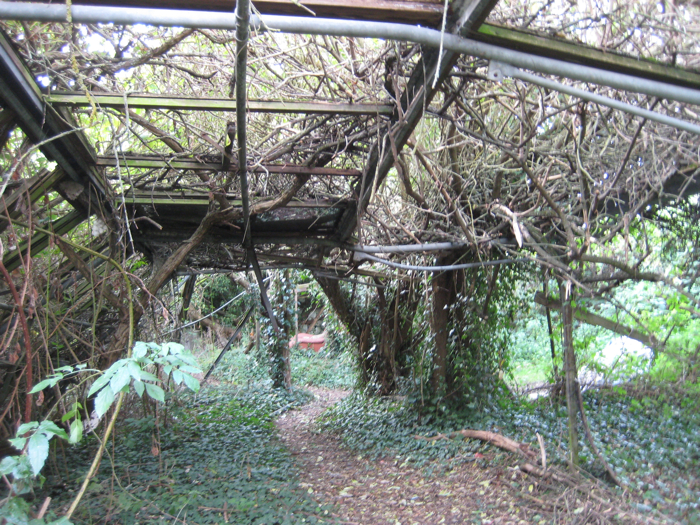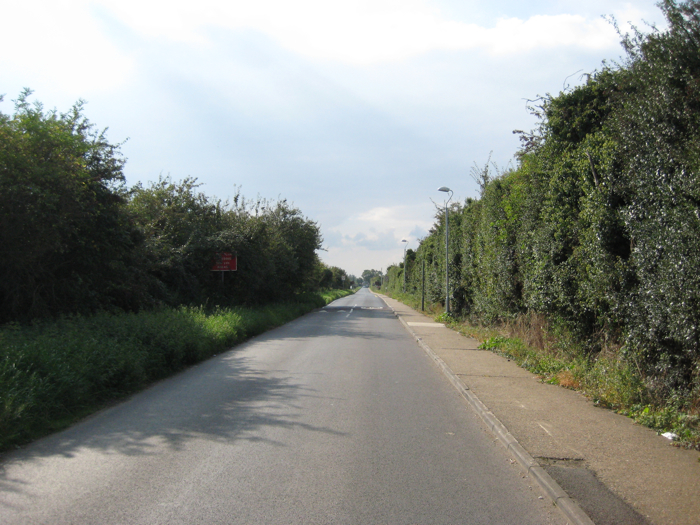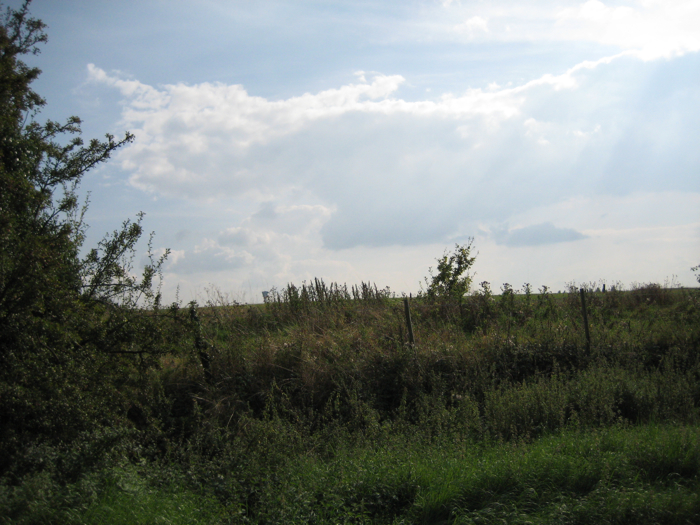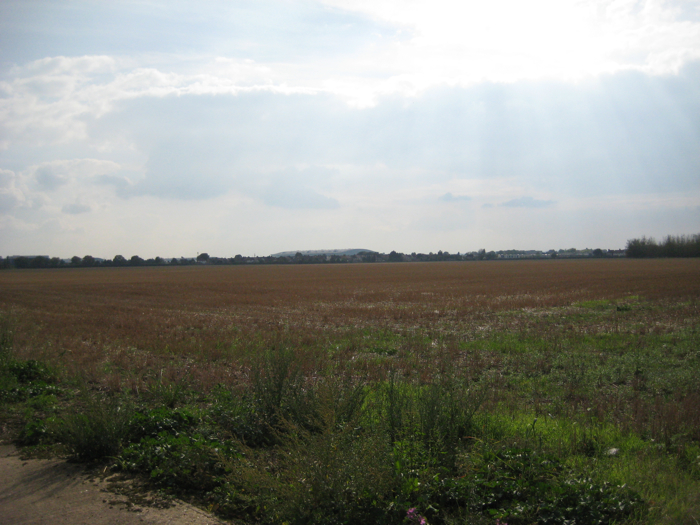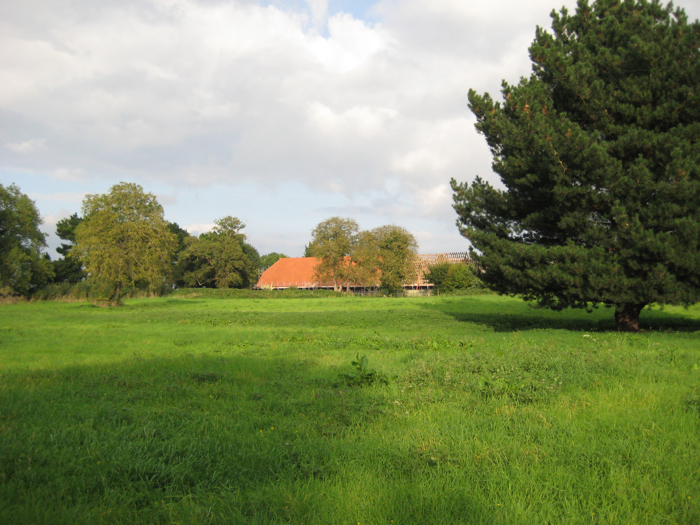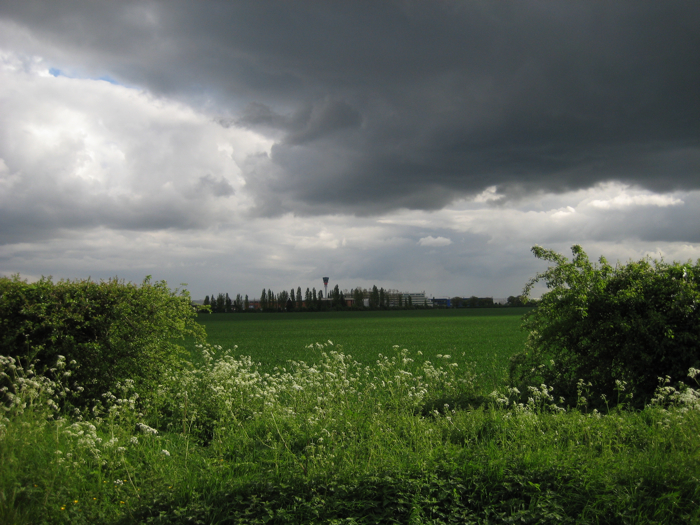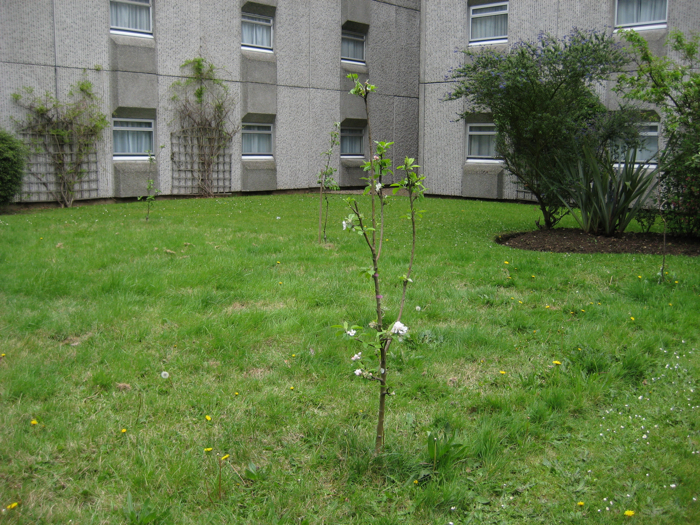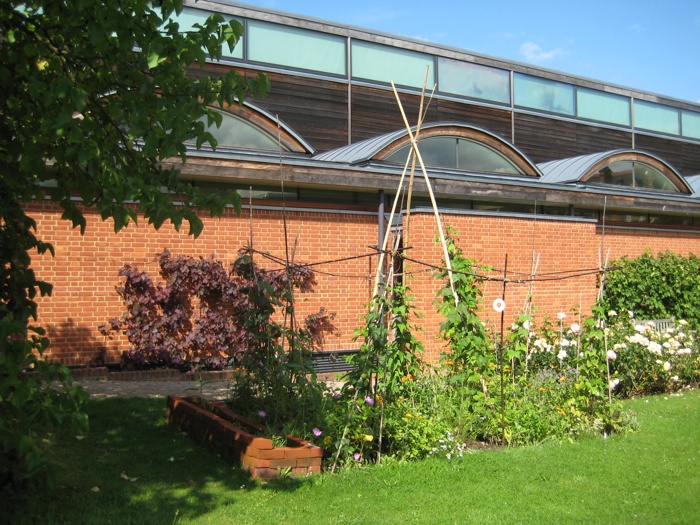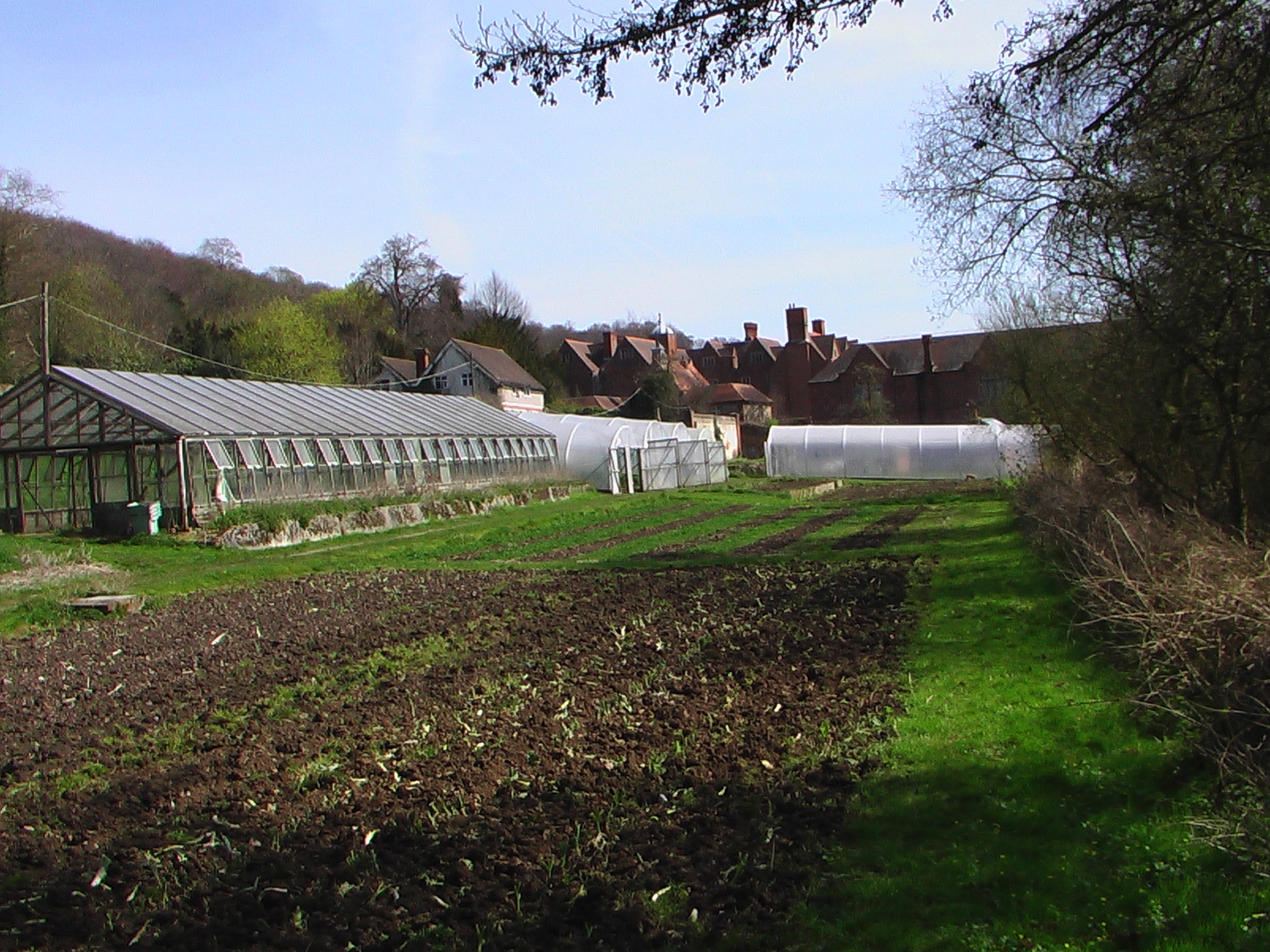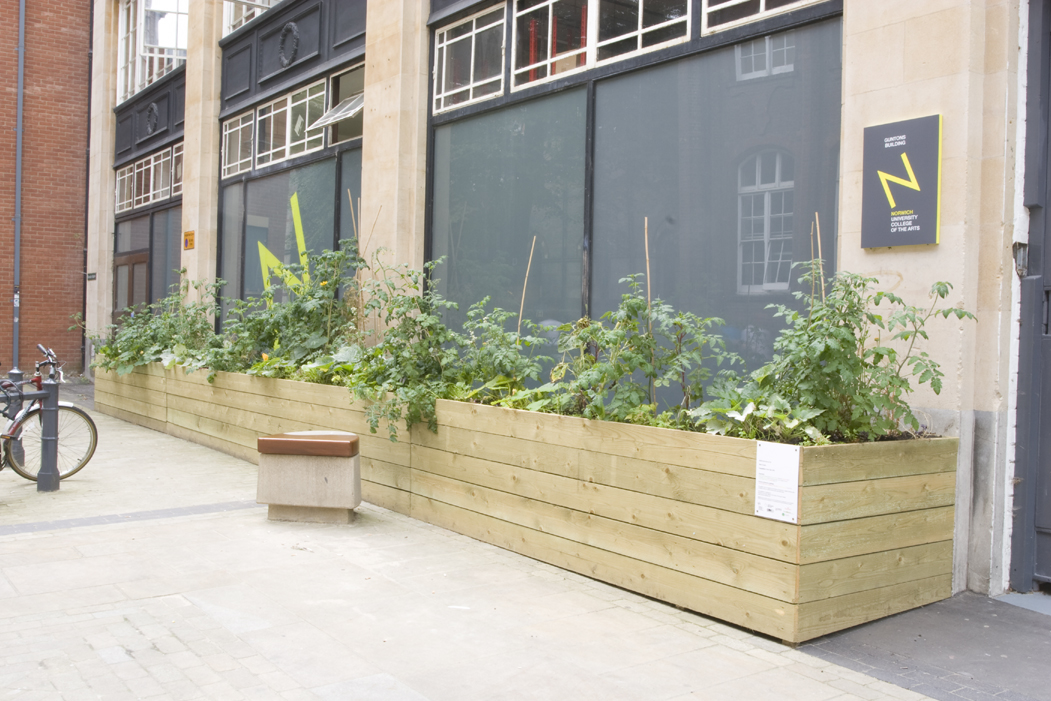Mystical Garden Plant Tree series ongoing 2023 update
Continuing a theme of earthworks, which can include on site live happenings and sculptural installation, Kate Corder is producing drawings and watercolour paintings of gardens, plants, trees, parkland, river scapes and landscapes; recognizing human and non-human interaction with all these things. Cosmic forces, environmental factors, chemical sensitivity, blundering capitalism, species fragility, extinction, ecology and meditation shape this work. Contact Kate Corder if you are interested in buying or exhibiting this work.
Allotment Plot Continuation: the allotment as studio
Gardening or rural labour is one aspect of Kate Corder’s artwork and research. Kate cultivated Allotment Plot 326 (2010-2019) and continues to cultivate Allotment Plot 21 (2015 ongoing). The plots as a concern investigate Allotment Gardens as site, studio and earthwork. Kate’s allotments might not always look orderly to the discerning eye, but as plots they are like paintings; layered, worked and reworked, creating juxtapositions of companion planting and vegetable matter situated with the earth ground acting as a living canvas surface or gallery floor. The plots are time based installation adjusted and readjusted through time by agents; garden workers both human and non-human. The plots are vibrant throughout the year. Each season differs and can be more suitable for one plant or another. Summer crops can be abundant, but also at anytime of year crops can fail. Winter can be bleak, but hardy overwintering greens and crops may survive frost damage producing essential nutrition. Composting is a methodology incorporated in to practice and productivity creating new earth. Gardens can be places of labour and simultaneously leisure. Plots generate plant material through fruit and vegetable production, useful companion planting and perhaps unwanted self-seeded wild plants. Self-seeded plants when flowering provide food for insects. Allotments are wildlife estates, places of cohabitation situated in everyday life affected by climate and cultivation. Subject to environmental factors and wildlife agents crops can flourish or fail. Human and non-human interaction is a fluxing cultivation process. Wildlife can assist in control and deterrent of unwanted predators and / or consume the crop before it has germinated or at the moment of imminent harvesting. Vegetable and fruit production can be prolific with supernatural elements intensifying magical production or crop failure can be dismal and disappointing. Some gardeners can have tricks and sometimes use potentially polluting un-environmentally friendly chemicals. Kate’s collaboration with alien garden worker Ella Montt – see Ella Montt’ blog, observes the plot through a virtual portal. Both Kate and Ella Montt use vegan organic methodology for cultivation (and lifestyle).
Exhibitions in 2018
Plant and Plot exhibition at The Turbine House, Riverside Museum, Blake’s Lock, Kenavon Drive, Reading, RG1 3DH. Date: 9th to 18th August 2018.
Cultivation of allotment gardens and plant material are subjects explored by multi-disciplined artist Kate Corder in her exhibition Plant and Plot at the Turbine House.
Photo series:
King’s Cross spring 2015 and autumn 2016
HOW – Heathrow Orchard Walks (2014-2016)
Allotments, Plant Life, Wild Life and Rural Labour (2009-2023)
Borage (2012-2022)
Flower Power Cosmos Cosmea (2020-2022)
Village Horticultural Show 2016
King’s Cross Late Autumn Walk – 30th November 2016
Meet at 14:00 at the Oak Tree on King’s Boulevard. The Walk tours explores old and new developments in the local area, visiting Old St Pancras church yard, the Hardy Tree, the disruption of the Camely Street wildlife garden and the ongoing building work redeveloping King’s Cross. The Walk finishes at 16:30 at Granary Square.
HOW – Heathrow Orchard Walks 2016
The series of HOW – Heathrow Orchard Walks continues in 2016. In a continuing process of exploration new routes and additional locations are being defined. The villages of Sipson or Harmondsworth will be HOW starting points. Dates and times will be announced on a regular basis. Please sign up to the emailing list if you want more information.
HOW – Heathrow Orchard Walks 2015
The series of Heathrow Orchard Walks continues in 2015. In an ongoing process of exploration new routes and additional locations are being defined. The villages of Sipson or Harmondsworth will be Walk starting points. Dates and times will be announced on a regular basis. Please sign up to the emailing list if you want more information.
October Heathrow Orchard Walk 2014
Kate Corder’s next walk around the Heathrow area will be on Sunday 12 October 2014, 1.30-5.30pm
Prior to the airport, Heathrow and the land surrounding the area flourished with orchards and market gardens supplying vegetables and fruit to London and local communities. The land in the area remains heavily contested through suggestions of airport expansion, airport closure and a new Heathrow town. If the airport closed developers would exploit land elsewhere. Global warming through carbon pollution and economies are un-separable from this debate. Leading from the September Haystack’s Heathrow Orchard Walk, the October Heathrow Walk will once again search for evidence of apple trees, orchards and market gardens in this unexpected London landscapes (full of contradiction and, extremes). We will discuss ideas of potential change to the existing land and communities.
Q: What if the airport remained as is and the once fertile fields surrounding the airport were newly planted with forest gardens?
Suggestion: Plant fields around Heathrow with Bamboo or Nettles for quick growing crops. Plant fibres from theses plants can be grown without the use of chemicals and used for clothing and household textiles.
The walk starts at the gates of Transition Heathrow, a multi acre squat in an old market garden at the village of Sipson. We then walk from Sipson, passing the former Greenpeace Airplot orchard (no longer there) to Harmondsworth (1.1miles) to the Grade 1 listed 600 year old Harmondsworth Barn, which is open to the public for the last time this year on October 12. Then we go to St Mary’s churchyard (next to the barn) to visit the grave of Richard and Ann Cox in (the Coxs grew the first Orange Pippin apple).
On route Kate will discuss the history of cultivation in the area and screen artist Tom Ingate’s “Apple Tree Orchestra” performance and other Heathrow related films on a mobile phone. We will exploring the area for apple trees. Then we walk along the Duke of Northumberland River Path to the Sheraton Heathrow Hotel and visit the apple orchard in the hotel garden. We end the walk with drinks in the Sheraton Discovery Bar.
Schedule: times and locations
Our first meeting point is at West Drayton train station (TFL zone 6) at 1.30pm (trains from Paddington take 20 minutes). From there we take the 222 bus (towards Hounslow) to Sipson. If you are travelling on the Underground meet us at Grow Heathrow in Sipson Village at 2pm. (Take the Piccadilly Line to Hounslow West and then take Bus 222 toward Uxbridge and get off at Sipson Close). Transition Heathrow is a minute walk away from the bus stop, turn right onto Sipson Lane and left onto Vineries Close and find their gate.
Addresses along the way and approximate times:
2pm – Transition Heathrow, Grow Heathrow, Vineries Close, Sipson, West Drayton, UB7 0JH.
3.00pm – Harmondsworth Barn, The Great Barn, Manor Court, High Street, Harmondsworth, UB7 0AQ. The Barn closes at 4pm.
4pm – Richard Cox’s grave, St Marys, High Street, Harmondsworth, UB7 OAQ.
5pm – Sheraton Heathrow Hotel, Colnbrook By-Pass, Harmondsworth, UB7 0HJ.
From the Sheraton we can take buses (U3 or 350) back to West Drayton or Heathrow Underground station.
Haystacks 14: Heathrow Orchard Walk, autumn version Sunday 14th September 2014
Haystack_14 Heathrow Orchard Walk (autumn version) with Kate Corder
Sunday 14 September 2014, 1.30-5pm
In spring 2014 towards the end of apple blossom, a first Heathrow Orchard Walk took the form of a guided tour between Sipson and Harmondsworth village, searching for evidence of orchards and apple trees. Haystack number 14 will revisit this tour of contradictions, extremes and unexpected London landscapes during apple harvest time.
Prior to the building and expansion of Heathrow Airport the area surrounding both villages flourished with market gardens and orchards growing food for local communities and London. Kate Corder will take a guided walk across the land which is a potential site for the heavily contested third runway.
The walk starts at the gates of Transition Heathrow, a multi acre squat in an old market garden at the village of Sipson. We then walk from Sipson, passing the former Greenpeace Airplot orchard (no longer there) to Harmondsworth (1.1miles) to visit the grave of Richard and Ann Cox in St Mary’s churchyard (the Coxs grew the first Orange Pippen apple). Next to the churchyard lies the Grade 1 listed 600 year old Harmondsworth Barn, which is going to be open to the public the same day.
On route Kate is going to discuss the history of cultivation in the area and screen artist Tom Ingate’s “Apple Tree Orchestra” performance on a mobile phone. The last part of the walk takes us to the Sheraton Heathrow Hotel, either directly along the main road or the Duke of Northumberland River Path. After visiting the apple orchard in the hotel garden, the Haystack ends with drinks in the Sheraton Discovery Bar.
Schedule: times and locations
Our first meeting point is at West Drayton train station (TFL zone 6) at 1.30pm (trains from Paddington take 20 minutes). From there we take the 222 bus (towards Hounslow) to Sipson. If you are travelling on the Underground meet us at Grow Heathrow in Sipson Village at 2pm. (Take the Piccadilly Line to Hounslow West and then take Bus 222 toward Uxbridge and get off at Sipson Close). Transition Heathrow is a minute walk away from the bus stop, turn right onto Sipson Lane and left onto Vineries Close and find their gate.
Addresses along the way and approximate times:
2pm – Transition Heathrow, Grow Heathrow, Vineries Close, Sipson, West Drayton, UB7 0JH.
3.30pm – Richard Cox’s grave, St Marys, High Street, Harmondsworth, UB7 OAQ.
4pm- Harmondsworth Barn, The Great Barn, Manor Court, High Street, Harmondsworth, UB7 0AQ.
5pm- Sheraton Heathrow Hotel, Colnbrook By-Pass, Harmondsworth, UB7 0HJ.
From the Sheraton we can take buses (U3 or 350) back to West Drayton or Heathrow Underground station.
Haystacks 11_Heathrow Orchards, spring version Sunday 27th April 2014
The next Haystack takes the form of a tour to various orchards and apple related sites around London’s Heathrow area. Kate Corder is interested in the Thames Valley Corridor as a former apple tree orchard cultivation area, which included Heathrow prior to the building of the airport. It is still undecided if or when a Third Runway will be built at Heathrow. Kate will direct a walk searching for apple tree blossom along one of the potential runway sites in the public domain. The walk will meet at Transition Heathrow, a squat in an old market garden at the village of Sipson, then walk to Harmondsworth to visit the grave of Richard Cox, who grew the first Cox’s Orange Pippen apple. The walk will continue to the Sheraton Hotel at Heathrow, where the managers planted an orchard, and the Haystack ends with drinks at the Discovery Bar.
Our first meeting point is at West Drayton train station (TFL zone 6) at 1.30pm (trains from Paddington take 20 minutes), there we will get the 222 bus (towards Hounslow) to Sipson. If you are coming on the Underground meet us at Grow Heathrow in Sipson Village at 2pm. (Take the Piccadilly Line to Hounslow West and then take Bus 222 toward Uxbridge and get off at Sipson Close). Grow Heathrow is a minute walk away from the bus stop, turn right onto Sipson Lane and left onto Vineries Close, where you will find the entrance.
Grow Heathrow is the market garden set up by Transition Heathrow. Here Kate is going to introduce the site and apple history followed by an I Phone screening of artist Tom Ingate’s “Apple Tree Orchestra” performance.
From there we’ll be walking to Harmondsworth (1.1miles), passing the former Greenpeace Airplot. Artist Jo Thomas will be remembering the apples trees planted and twinned in support of Greenpeace Airplot.
In Harmondsworth we will go to St Mary’s church and visit Richard Cox’s grave in the churchyard. Here, Kate will read a short essay on Richard Cox and apples.
We will then walk to the Sheraton Hotel Heathrow for a drink at the Discovery Bar, and visit the orchard planted by managers two years ago in the hotel garden.
From there we take a bus back (U3 and 350) back to West Drayton or Heathrow tube.
Addresses along the way:
Transition Heathrow, Grow Heathrow, Vineries Close, Sipson, West Drayton, UB7 0JH
Richard Cox’s grave, St Marys, High Street, Harmondsworth, UB7 OAQ
Sheraton Hotel Heathrow, Colnbrook By-Pass, Harmondsworth, West Drayton UB7 0HJ
Allotment Plot at MERL, 2009 – 2012 and Allotment Plot 326, 2010 ongoing, (see Ella Montt’s blog)
Tolhurst Stockfree Organic Growers 2007-8 film project
The Tolhurst film was exhibited at EASTinternational 2009, along with Vegetables in the City; two large vegetable planters installed on St Georges Street, Norwich, at the EAST exhibition venue. The vegetables were grown by Kate and a group of art students. Further vegetable planting work was installed through a collaboration with Norwich City Council, on the Norwich’s Town Hall balconies and at The Assembly House.
